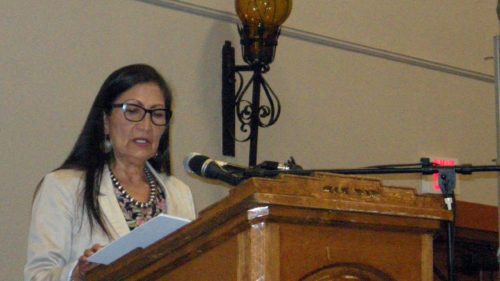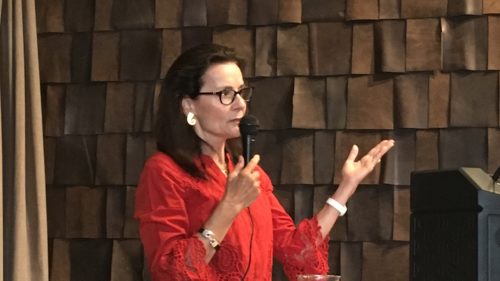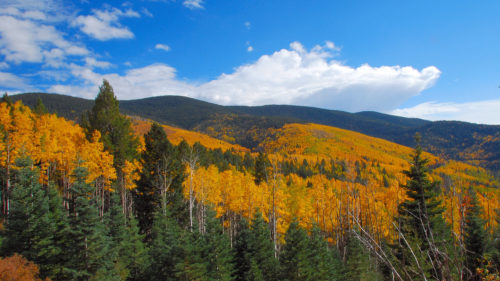On Sept. 3, 1964, Congress designated 168,667 acres high in the Sangre de Cristo Mountains of northern New Mexico as the Pecos Wilderness. Another 55,000 acres was added to the existing wilderness in 1980. The geographical location of this important and impressive wilderness area lends itself to be the epicenter and the heart of everything that makes northern New Mexico so special.
For generations, native peoples including the Picuris, Taos, Nambe, Tesuque and Pecos pueblos and the Comanche, Kiowa and Apache depended on game, fish and the edible and medicinal plant-rich highlands for both their physical and spiritual sustenance.
The Spanish colonias that encompass this magnificent area, depend as much today as they did 300 years ago on the area’s unrelenting supply of clean, clear water for drinking, farming and livestock as well as the area’s abundance of fish, wildlife, herbal plants, piñon and firewood. Permitted cattle growers also use the wilderness’ lush vegetation – as they have for hundreds of years – for grazing during peak production months.
The Pecos Wilderness has also become a destination for tens of thousands of people who visit this scenic and valuable wild land for a multitude of uses including hunting, fishing, horseback riding, camping, hiking, wildlife watching, medicinal herb gathering, solace and spiritual inspiration.
The land is as wild today as it was when French fur traders traveled this high altitude oasis in search of beaver. Just as humankind has done so many times, the fur traders exploited the abundant beaver almost to extinction, just as other western Europeans did with the American bison.
By the time the Pecos Wilderness was designated, grizzly bears and wolves were extirpated from the region, but the area remained a critical refuge for reintroduced bighorn sheep and elk as well as mule deer, bear, turkey, grouse and native Rio Grande cutthroat trout.
As the New Mexico frontier developed, cattle and sheep herds were also introduced to the alpine meadows and overgrazing decimated the native grasses in the highlands that are now the Pecos Wilderness.
During the same period, timber barons claimed the land that once belonged to Spanish and Mexican land grant heirs. The exploitation of natural resources continued in the Sangre de Cristo Mountains. Railroad companies contracted with the newly established timber industry to provide enough ties to complete the transcontinental railway system to points west from New Mexico.
I offer this brief history as an example of why conservation and protection of places of great value have occurred in the western United States. Had it not been for a wise few, the American bison would be extinct. Rocky Mountain elk, bighorn sheep, mule deer, pronghorn antelope, beaver, black bear and hundreds of species large and small would have been lost, not to necessity, but to stupidity. My own definition of conservation is “saving us from ourselves.” Since the dawn of man, this misguided sense of entitlement and domain over what sustains us has placed the citizens of this great country, and people around the globe, at peril time after time.
By recognizing these historical blunders, we can hopefully learn from them and do things differently in the future. We have lost nothing with the designation of our wilderness areas. New Mexico is home to the first designated wilderness area in the world – the Gila Wilderness, on June 3, 1924.
So why, after we evolved people have seen the destruction we can and will do to our natural community, insist on not protecting it? Can it be that same greed and entitlement that says, “I can make money on this land, I can strip it of all its value, we don’t have to worry about future generations, we need these resources now.”
In the late 1970’s and early ‘80’s, a movement known as the Sagebrush Rebellion emerged as some individuals and organizations thought it best that our federal public land should be turned over to the individual states. Widespread public opposition kept the rebellion in check, but it has arisen several times since then under different names.
The movement returned in 2012 with some very wealthy supporters. Big industry has found abundant resources in western states – control and ownership of water and watersheds being the most valuable, above even mineral and timber interests – and is supporting the Sagebrush Rebellion’s latest revival.
My understanding of our national public lands is that each and every American citizen is an equal co-owner of our nation’s common lands. Now some corporate-backed elected officials in many western states, including New Mexico, want the federal government to divest itself of millions of acres and turn it over to the states to do with as they choose.
Across the board, western states simply cannot afford to manage what they currently have, much less millions of additional acres. The states will do what they have done historically – sell these prime lands, lease them and otherwise lock them up so that the former owners – we, the American people – are locked out.
So correct me if I’m wrong, but is this not like Robin Hood in reverse? It’s disturbing that the wealthy and powerful people are repeating history by exploiting the less fortunate of this country for personal gain. Even more disturbing is that they have convinced quite a few people that this is a good idea.
How this all relates to the Pecos Wilderness is that we have a protected area that has value beyond any amount of money that the land can generate. We have a magnificent place where our water sources are protected, where our wildlife resources will thrive without interference from humankind. Where our priceless tribal and Hispanic cultures can remain viable by responsibly accessing and utilizing the land and its precious natural resources. Where nature has proven over the years that left to its own devices, it can and will restore unto itself abundance that will sustain future generations of northern New Mexicans.
So refresh my memory. Why is designating, adding to, and protecting our wilderness areas – either through Special Management Areas designation and/or additional wilderness –a bad thing? There are places on this earth that are worthy of such protection, and anyone who has had the opportunity to visit the Pecos Wilderness knows this fact well.
We must not repeat the dark and disgraceful deeds of those who came before us, who thought themselves entitled to conquer and exploit the very thing that sustains us all. For these places of enduring grandeur have the power to humble the most lofty of us while elevating the most lowly and place each and every man and woman as equals. If we could for one moment picture what life would be like in communities surrounding the Sangre de Cristo Mountains without the protection of our beloved wilderness, one would see desolate and lifeless skeletons of communities that once thrived because the place where life itself is born would be gone.
Why have conservation and protection become bad words in some circles? Could these words imply that the rich and powerful are rendered powerless and the less fortunate are vigorously protecting what is theirs? As Inventoried Roadless Areas designated by the Forest Service are being considered for incorporation into the wilderness, let us ask ourselves a deep and abiding question: If we as a people of the land do nothing to protect what is ours, what will we say to our grandchildren and their grandchildren? How will we explain to them that we stood idly by when big industry came for our inheritance?
Conservation and protection are not empty words. They mean that we the people took action and stood up to those who want this common land for themselves and their wealthy friends. It means that we cared enough to preserve a way of life, a culture, and an understanding of what makes us different from other states and countries that have lost their public lands and their ability to say, “This land is our land.”
Max Trujillo, a lifelong Las Vegas, N.M. resident whose family has been in northern New Mexico for eight generations, is the NMWF Northern New Mexico Sportsman Organizer and a board member of the National Wildlife Federation.



